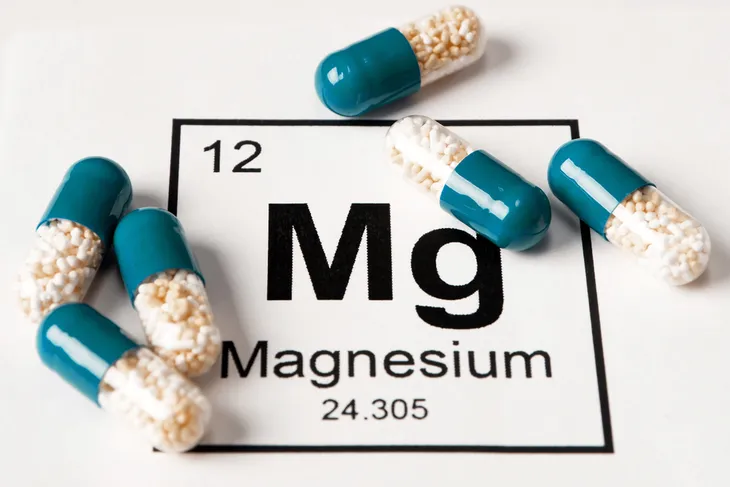We’ve all been there at one point or another. Alone, scared, and aimlessly staring at the supplement store vitamin wall. There are enough colors, options, sizes, and unintelligible language to make anybody’s head spin. But we’re here to help!
Vitamin shopping sure can be intimidating but when you get down to it, distinguishing between a high-quality multivitamin and ones to avoid is just a matter of understanding a few basic principles. Today, we’re going to arm you with knowledge! Here’s what to look for and what to avoid in a multivitamin.
Look For: Vitamin D
Vitamin D is a biological workhorse and a key component of the human immune system. Sure, it can be sourced by standing out in the sunshine but that’s not always an option. Thankfully, most high-quality multivitamins include it in some form or another.
The recommended daily dose of vitamin D rests somewhere in the 600 to 800 IU per day range. So be mindful of how many multivitamins you plan on taking in a day and choose one accordingly.
Look For: Zinc
Zinc plays an important role in your body too. The difference being that Zinc isn’t naturally produced by the body, nor is it absorbed through the sun’s light. The only way to enjoy the many benefits of zinc is through food or supplements.
Zinc is a critical component of over 300 enzymes that aid your metabolism, digestion, nerve function, and more. If the nutrition facts on the back of the box omit zinc, you should probably pick a better multivitamin.
Avoid: Maltodextrin
Spotting poor-quality multivitamins is easy if you know what to look for. That’s because, in addition to their impressive-sounding list of vitamins and minerals, they often contain not-so-desirable ingredients like fillers.
Maltodextrin is one such filler that’s often found in poor-quality multivitamins. And trust us, you don’t want any part of that. Maltodextrin can cause spikes in your blood sugar, and may even negatively impact your gut bacteria.
Look For: Magnesium
Magnesium helps calm our nervous system, eases sleep problems, regulates muscle and nerve function, and plays an important role in promoting bone health and the production of energy. It’s a big deal, and it should be included in any multivitamin that’s worth your money.
You can get it from food, but if you want to be on the safe side, aim to supplement with 300 to 320-milligrams (mg). It may take some time to notice the difference, but the long-term benefits of magnesium supplementation are the real test.
Avoid: Magnesium Oxide
A sure sign of a poor-quality multivitamin is the inclusion of magnesium oxide. It’s not that magnesium oxide has no business being in your pharmacy. Magnesium oxide is an active ingredient in a variety of over-the-counter medications used to treat short-term digestive issues.
But, when found inside a multivitamin, it’s best to stay away. That’s because magnesium oxide is poorly absorbed by your digestive tract. Especially when compared to higher-quality sources of magnesium like magnesium malate.
Look For: Calcium
Grandma was right. Getting enough calcium is critical to your overall health. Calcium promotes strong bones and teeth. And sure, it can be found in abundance at your grocery store. In fact, dairy products, salty fish, broccoli, kale, nuts, and beans are loaded with calcium. Still, only 32-percent of U.S. adults meet the adequate calcium intake through diet alone.
This is why any multivitamin that’s worth your time and money must provide you with a calcium boost. The sweet spot is 1,000-mg a day, through a combination of supplementation and diet.
Avoid: Calcium Carbonate
There are a variety of ways for a well-meaning person to supplement calcium, but not all of them are created equally. For instance, calcium carbonate. Calcium carbonate is indeed made up of 40-percent elemental calcium, but it’s harder for your body to absorb, and must be consumed with food.
Instead, keep an eye out for calcium citrate. Calcium citrate doesn’t need to be consumed with food and acts as a reliable source of elemental calcium in a high-quality multivitamin.
Look For: cGMP Stamp
The Food and Drug Administration doesn’t want to leave you scratching your head in the multivitamin aisle either. They ensure pharmaceutical quality with Current Good Manufacturing Practices (cGMPs).
If you’re unsure about a particular brand of multivitamins, look for the cGMP label on the bottle. If it’s not there, putting down the bottle and opting for something else is probably for the best.
Avoid: Food Coloring/Dyes
The multivitamin industry is growing every single day. Which creates a bit of a double-edged sword for the consumer. On the one hand, more competition means more competitive pricing and an incentive to innovate. On the other, there are a lot of sub-par supplements that you must sift through before you land on the best one available to you.
One way to distinguish between good and sub-par multivitamins is by reading the label. If the ingredient list includes food coloring or dyes, it’s best to avoid them.
The Takeaway
Multivitamins alone aren’t the answer. Clean up your diet, exercise more, and drink lots of water. If you’re considering a multivitamin, speak to your provider to determine if one is actually necessary.
The more healthy choices you integrate into your day-to-day life, the more energy you’ll have, the better you’ll feel, and the happier your body will be.













